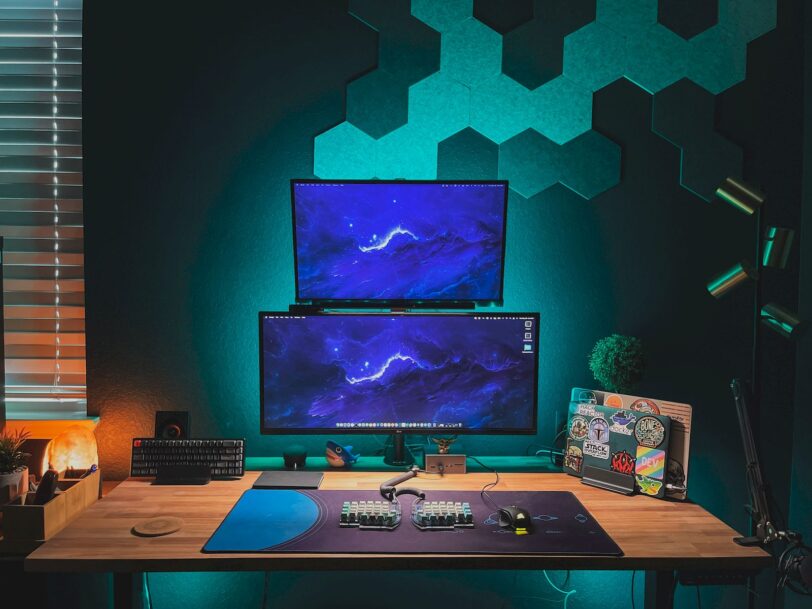Monitor panel types for gaming

Choosing the right type of screen will allow you to enjoy using your PC monitor to the fullest, especially when you are going to use it to play games. The user experience depends on many factors, such as the resolution or the refresh rate, but the type of screen has a fundamental influence. Let’s see what types there are and what advantages they offer us.
Is the type of monitor screen just as important if I’m not going to play? In this article, we are going to focus on the type of monitor screen that is best for gaming. To work in office automation, any VA or IPS works, although as we will say some people report readability problems on curved VA panels. In editing uses or where color is important, the monitor will be IPS or better (for example OLED).
Gaming monitor panels
What we will do is tell you first how each type of screen works on a technical level, but it is a fairly complex topic, so we leave it more at the level of curiosity. Except in the case of OLEDs, we will always be talking about LCD monitors with LED backlights.
TN (Twisted Nematic)
The Twisted Nematic panel was for many years one of the most used to play. Its operation is based on the rotation of the liquid crystals when an electric current is applied, allowing the different pixels to be displayed or not.
This is a type of panel that is characterized by being very cheap to produce, but it has numerous disadvantages:
- Viewing angles are very narrow. If you look at a TN screen from either side, the image gets very distorted, especially from above. It is the way to identify if a monitor is TN.
- The colors are much more subdued than in other types of panels.
- In addition to low contrast, black colors appear greyish.
So apart from the price, there are only bad things? No, we also have to point out their low response time, which explains why they were so popular to play, especially at a competitive level.
VA (Vertical Alignment)
As the name suggests, in a VA panel the liquid crystals are aligned vertically. This is a panel whose clearest characteristic is the best contrast, which goes from the typical 1000:1 of a TN or IPS to 4000:1.
The higher contrast allows for better reproduction of black colors. For example, if we watch a movie with black bands on the screen, these would be less noticeable.
As for colors and viewing angles, they are better than TN and worse than IPS. Response times are often the worst, and gaming monitors that use a VA display type are often more basic.
Also, another issue some monitors have with this panel is text readability, especially on curved models, because it’s slightly worse and some people notice it.
IPS (In-Plane Switching)
It is surely the best-known type of monitor screen, as it is also present in mobile phones, TV, etc. It works thanks to the alignment of liquid crystals in a plane perpendicular to the screen.
These are the advantages of IPS panels:
- Wider viewing angles, being able to see the screen from any side.
- More vivid and better represented colors.
- Good text readability.
Of course, there are also disadvantages:
- Low contrast, and therefore worse reproduction of black colors than VA. Propensity for light leaks.
- Worse response times than a TN.
- More expensive to produce than a TN.
However, these disadvantages have been greatly reduced. There are already IPS monitors that match the TN in response times, and the prices are also matched.